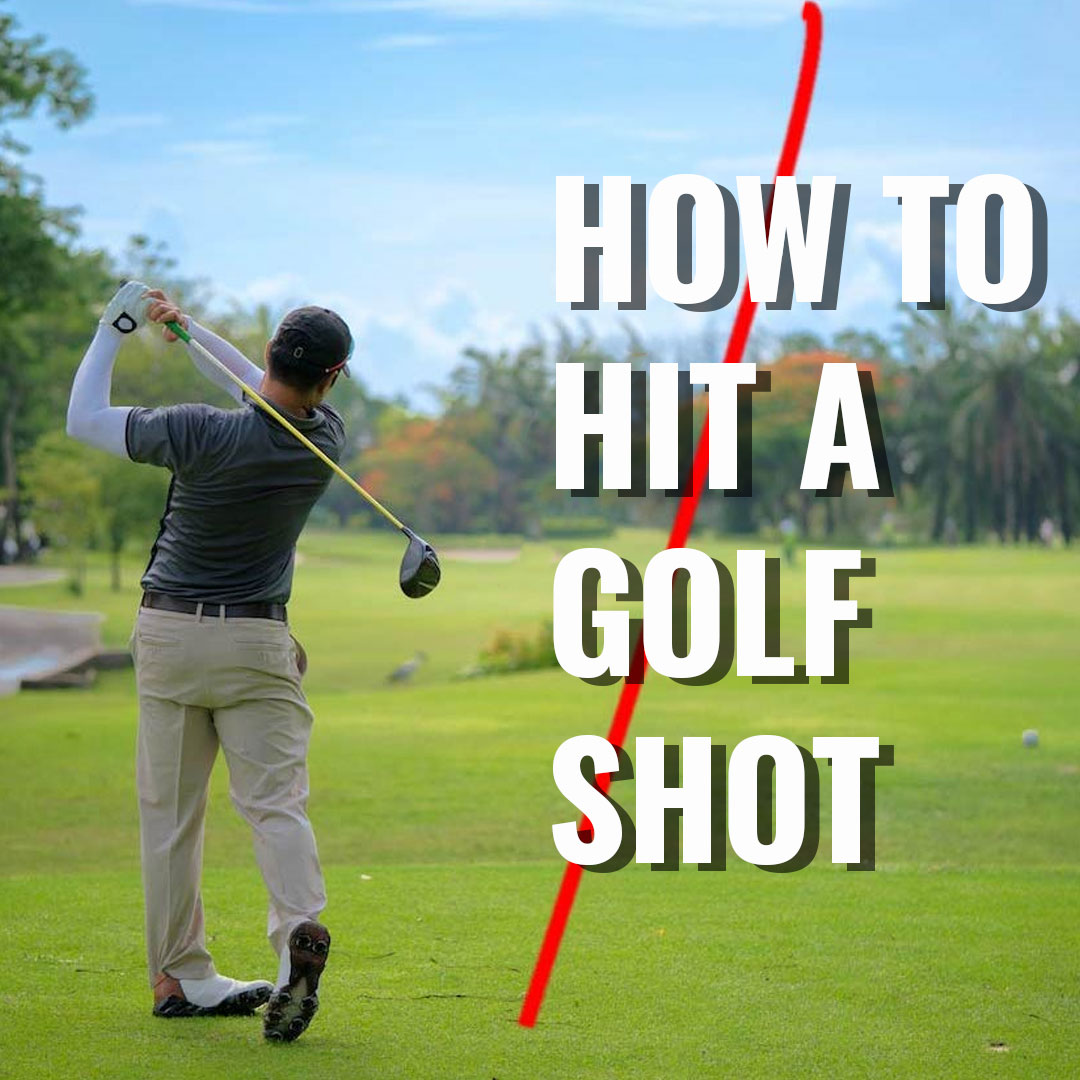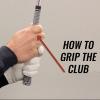How to hit a golf ball

|
Article Summary: ● Master the Golf Swing Fundamentals: A correct grip (overlap, interlock or baseball), proper stance with balanced posture and accurate alignment of the body and clubface are essential for a strong foundation in golf. ● Perfect Your Swing Mechanics: Focus on each component of the swing: a smooth and controlled backswing, a powerful and well-timed downswing, and a balanced follow-through to achieve consistent and accurate ball striking. ● Practice Regularly and Troubleshoot Issues: Engage in targeted drills and exercises to refine different aspects of your swing. Utilise training aids to enhance efficiency and learn techniques to correct common problems like slicing and hooking for overall game improvement. |
Golf Swing Basics
Mastering the basics of the golf swing lays the foundation for a successful game—and it all starts with understanding how to grip the club, the correct stance and posture, and the importance of proper alignment.
How To Grip A Golf Club
Your grip is a foundational element of your golf swing, allowing you to control the golf club and deliver accurate shots. There’s a fair bit that goes into perfecting your grip. While you can always delve into the finer details of perfecting your golf grip in our How to Hold a Golf Club guide, if you just want the basics, here’s what you need to know…
There are three primary types of golf grips: the overlap (or vardon) grip, the interlocking grip and the baseball (ten-finger) grip.
- Overlap grip: This is the most common grip among professional golfers and players with large hands. To use it, place the pinky finger of your trailing hand (right hand for right-handed golfers) on top of the index finger of your lead hand (left hand for right-handed golfers). This allows your hands to work together as a single unit.
- Interlocking grip: This grip is ideal for golfers with smaller hands. While similar to the overlap grip, with this grip you interlock the pinky finger of your trailing hand with the index finger of your lead hand. This provides a firmer hold on the club, allowing for a more powerful swing.
- Baseball grip: Also known as the ten-finger grip, this method involves all ten fingers touching the club, with the base of the top hand pressed firmly against the bottom hand. It is often preferred by beginners or those with arthritis, as it offers a more natural feel.
Every golfer will have their own grip preference. Ultimately, your chosen grip should come down to what feels most comfortable.
Golf Stance and Posture
Now, let’s consider your stance and posture.
Your stance and posture are crucial for maintaining balance and power during your swing. If you often struggle with inaccurate or weak shots, incorrect stance or posture may be to blame.
Here’s what you need to consider when setting yourself up for a shot:
- Stance: Your feet should generally be about shoulder-width apart. When using longer clubs like the driver, your feet may be slightly wider, while your feet can be positioned closer together when using shorter clubs like irons or wedges.
- Posture: For ideal posture, keep your back straight and tilt slightly forward from the hips (not your waist). Your back should remain straight and you should feel a slight flex in your knees. This will allow for better rotation and power transfer during the swing.
- Weight distribution: Distribute your weight evenly between both feet, with a slight favour towards the balls of your feet. This balance is crucial for maintaining stability and control throughout the swing.
Proper Alignment in Golf
Next, consider how your feet, body and the clubface are aligned to the ball. A correct alignment will ensure your shot is aimed correctly towards your target.
Here’s what you need to do:
- Set your feet and shoulders: Align your feet parallel to your target line. Your shoulders, hips and knees should also be parallel to this line.
- Align the clubface: The clubface should point directly at your target. If you’re unsure if you’re doing this correctly, you could try practising with golf alignment sticks or other golf training aids to help you find the right technique.
- Set your gaze: Ensure your eyes are directly over the ball when putting. For full swings, your eyes should follow the target line to maintain focus and accuracy.
How To Swing A Golf Club
Now we’ve been through the fundamentals of setting up your shot, it’s time to focus on your golf swing basics.
The golf swing sequence is a complex motion involving multiple phases—your backswing, downswing, impact and follow-through. You need to execute each of these basic golf swing fundamentals correctly to achieve a straight, powerful and accurate shot.
Golf Backswing
The backswing, or the initial movement of the club away from the ball, sets the stage for a successful shot.
Here’s what you should focus on:
- Takeaway: Begin by smoothly pulling the club back, keeping your wrists quiet (maintaining minimal movement or hinge) and the clubhead low to the ground. Your arms and shoulders should move in unison in a coordinated motion.
- Rotation: As the club reaches waist height, start rotating your shoulders and hips. Your lead arm should remain straight, and your trailing arm should begin to fold.
- Top of the backswing: At the top of your backswing, your lead shoulder should be under your chin and your back should face the target. Your wrists should be fully cocked, creating a 90-degree angle between the club and your lead arm.
Golf Downswing
The downswing, or the movement of the club back towards the ball, is where power is generated and transferred to the ball.
Here’s what you should focus on:
- Initiation: Start the downswing by rotating your hips towards the target. This movement should lead your upper body, creating a powerful unwinding motion.
- Arm and club movement: As your hips rotate, your arms and hands should follow. The club should drop into the “slot” (the ideal club position for a good shot), just above your trailing forearm. This will ensure an inside-out swing path (i.e. the club approaches the ball from inside the target line) to produce a straight and powerful shot.
- Weight transfer: Shift your weight from your trailing foot to your lead foot as your hips rotate during the downswing. This generates additional power and stability.
Impact and Follow-through
Impact is the moment of truth, where the club meets the ball. The follow-through ensures a complete and balanced finish.
Here’s what to focus on:
- Impact: At impact, your hands should be ahead of the clubhead, ensuring a downward strike for iron shots and a sweeping motion for woods. Your lead leg should be firm, and your hips should be open towards the target.
- Follow-through: After impact, allow your body to continue rotating. Your arms should extend fully, and the club should finish high over your lead shoulder. Your weight should be on your lead foot, with your trailing foot’s heel off the ground.
Practising Your Swing
Improvement doesn’t happen on its own—practice is vital if you want to improve your golf swing. Here are some helpful practice tips that can help you improve your swing mechanics, hit straight and hit them further.
Drills and Exercises
To help you get the most out of each practice session and rapidly improve your game, here are some useful drills and exercises you can try.
- Mirror drill: Use a mirror to check your positions during the swing. This visual feedback helps you make necessary adjustments.
- Slow motion swings: Practise your swing in slow motion to focus on each phase. This drill helps ingrain proper mechanics.
- Golf alignment sticks: Place clubs or alignment sticks on the ground to ensure your body and clubface are correctly aligned with your target.
- One-handed swings: Practise swinging with only your lead hand to improve your control and strength.
If you struggle with alignment and aiming, using a ball alignment marker to draw lines or marks on your ball as a visual guide to ensure the ball is lined up correctly with the intended target or stroke path could also be useful for setting up putts and full shots more accurately.
Golf Swing Trainers
While you may prefer to go it alone, golf swing training aids can be another great way to help you ensure your swing mechanics are on point and hone your technique.
Here are a few favourite golf swing aids you might want to try:
- Swing trainer sticks: Typically consist of a flexible shaft with a weighted end and can be great for improving your swing tempo, rhythm and timing, promoting a smoother transition between the backswing and downswing. They can also help you enhance muscle memory and reinforce a proper swing path.
- Swing guides: Another great tool that can help you create correct swing positions by setting the hinge position at the top of your backswing. This can help ensure correct face alignment throughout the swing to increase distance and enhance accuracy.
- Weighted clubs: Weighted socks or rings can be a great option for perfecting your swing rhythm and control as practising with the added weight makes your regular club feel lighter and easier to control. They easily attach to the clubhead and can help with everything from building clubhead speed and swing mechanics to flexibility and clubhead release.
When practising indoors, another good tip is to use a golf training mat to simulate the feel of hitting shots off real turf.
Troubleshooting Common Golf Swing Mistakes
Even experienced golfers can fall into bad habits. Here are some common swing mistakes and some tips on how to fix them:
- Slices: Slices are a common problem often caused by an open clubface at impact or an out-to-in swing path. If you’re prone to slices, focus on squaring the clubface and swinging along an inside-out path.
- Hooks: Hooks are another common issue that is usually the result of a closed clubface or an in-to-out swing path. Avoid hooks by working on keeping the clubface square and maintaining an on-plane swing path.
- Fat shots: If you’re hitting the ground before the ball, it’s often due to a steep swing plane or poor weight transfer. To correct this, ensure you’re rotating your body properly and maintaining balance.
- Thin shots: Striking the top of the ball is typically caused by lifting your head or an improper swing plane. To address thin shots, keep your head still and focus on maintaining a shallow swing path.
- Shanks: Contacting the ball with the club’s hosel typically happens because you’re standing too close to the ball or taking an over-the-top swing. To fix it, check your setup distance and work on swinging from the inside.
Advanced Golf Swing Techniques
Once you’ve mastered the basics and have grown more confident in your swing, you might want to explore advanced techniques to further refine your game.
Here are a few more advanced swing techniques to try mastering when you’re ready.
- Fade and draw shots: A fade curves gently from left to right (for right-handed golfers), while a draw curves from right to left. To hit a fade, open your stance and clubface slightly and swing along your body line. For a draw, close your stance and clubface slightly, swinging along your body line.
- Punch shots: Useful in windy conditions or when you need to keep the ball low. Play the ball back in your stance, keep your hands ahead of the ball and make a shorter, controlled swing.
- Flop shots: High, soft shots that land gently on the green. Open your stance and clubface, and use a high-lofted club like a lob wedge. Swing along your body line with a full follow-through.
- Bunker shots: To escape bunkers, open your stance and clubface and focus on striking the sand a few inches behind the ball. Accelerate through the shot, allowing the sand to carry the ball out.
- Advanced drills: Work on specific areas like increasing clubhead speed with overspeed training, or improving balance with stability exercises.
Being able to consistently hit a golf ball effectively requires a blend of technique, practice and patience. By mastering the basics, refining your swing and continuously practising, it shouldn’t take long to see significant improvements in your game.
Remember, every golfer has a unique swing, so take the time to find what works best for you, but most importantly, enjoy the journey as you continue to develop and improve your on-course performance!
Make sure you check out our blog for plenty of other handy golf tips and tricks.
Golf Clearance Outlet is your go-to if you’re looking for top-tier golf gear at discount prices. Browse our range of golf clubs, bags, balls, shoes and accessories online or find a store near you for professional advice and fittings.











